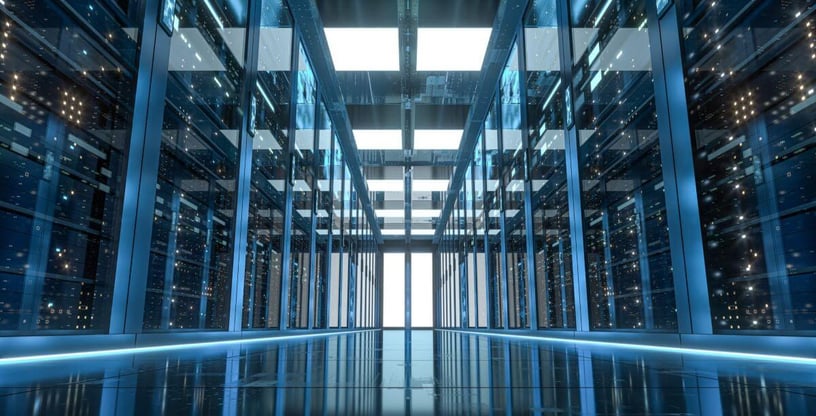
Many industry leaders had made predictions for what the 2020s would hold for the data center world. However, many of these predictions were impacted by the pandemic—a global hardship that had a profound impact on business and daily life. As the pandemic fades into the background, learn what trends are shaping the data center industry and how the industry is moving forward.
Increased Traffic and Demand
Prior to the pandemic, data center demand was expected to increase. While the pandemic negatively impacted business in other industries, the data center industry continued its increase.
As people became isolated from each other in 2020 and 2021, they took to the internet to stay connected, driving an uptick in internet usage. Broadband usage rose 17 percent from the fourth quarter of 2019 to the first quarter of 2020 and was 47 percent higher than it had been at the same time the previous year.
In addition to prompting individuals to use the internet more in their daily lives, the pandemic sent enterprises into digitization overdrive. Many companies rightly saw this challenging time as the push they needed to undergo digital transformation. In the summer of 2020, nearly two-thirds of enterprise leaders in the U.S. said the COVID-19 pandemic sped up digital transformation “a great deal.” Today, in 2022, even more businesses have embraced digital transformation.
Trends Driving Data Center Demand
The following trends are driving increased demand for data centers in the U.S. and worldwide. They are not a direct result of the pandemic, but they have driven the acceleration in demand brought on by increased digital transformation.
These include:
- Edge, IoT and 5G: As computing moves to the edge, data centers are needed closer to where data is created to mitigate latency issues. Low-latency processing is more critical now than ever with the rise of the Internet of Things (IoT), now empowered by 5G networks.
- Cloud computing: Cloud-based storage and software-as-a-service (SaaS) solutions have become extremely popular among organizations to support remote work, collaboration and other essential functions. This move to the cloud is expected to continue, with the cloud computing industry growing at a projected compound annual growth rate (CAGR) of 17.5 percent.
- Big data and AI: Companies are discovering how big data analytics can help them make more strategic and informed decisions to drive their businesses forward. The global big data analytics market is expected to expand at a CAGR of nearly 30 percent in the coming years. The artificial intelligence (AI) needed for these functions requires considerable data center capacity, typically in the area of high-performance computing.
- Colocation: Many companies are choosing to move away from on-premises data centers and instead locate their servers at colocation facilities. This move helps companies simplify their operations and even lower costs through outsourcing and allows them to scale more easily.
Challenges and Changes for the Data Center Industry
We’re also seeing some challenges and changes that have been shaping the data center industry over the last few years, especially in regard to new data center builds and expansion projects.
Supply Chain Disruptions
The pandemic has had a major impact on the supply chain. Many raw materials have been in short supply, which has begun to slow construction projects and raise costs. Additionally, many data center owners are running into long lead times to get the electrical, mechanical and IT components they need.
Labor Shortages
Another issue that is impacting data center construction projects is the skilled labor shortage. Attrition in data center professions was a preexisting problem that has been further exacerbated of late. Electricians, construction laborers and other professionals needed to build traditional data centers are in very high demand, often driving higher labor costs or longer wait times.
Real Estate Market
Data center projects are also affected by the real estate market. For many companies looking to build, Tier 1 regions have simply become too costly. Plus, some of these data center hubs are essentially filled to capacity by hyperscalers. This oversaturation and high cost are pushing many data centers to build in secondary and even tertiary markets, which often come with lower price tags and still provide the necessary proximity to population centers.
Edge Computing
The rising demand for edge computing is another major factor driving data centers to secondary and tertiary markets. Among other key factors, the move to a remote workforce that resulted from the pandemic is driving demand for edge computing. Data centers must become increasingly decentralized in order to provide low-latency computing at the edge.
Meeting Demand and Overcoming Challenges with Modular Data Centers
Modular and prefabricated systems accelerate construction and can help companies build out capacity quickly, mitigating many issues with on-site construction. PCX is vendor-agnostic, allowing us to offer our clients the flexibility of sourcing critical components from a number of suppliers to help your project stay on track. We control all aspects of the manufacturing process in our plants and conduct functional testing in our facilities, so your modular data centers arrive pretested and require minimal on-site work.
Want to learn more about how the data center industry is shaping up now and what we can expect going forward? Download your copy of The State of the Data Center Industry Post-Pandemic.


Comments